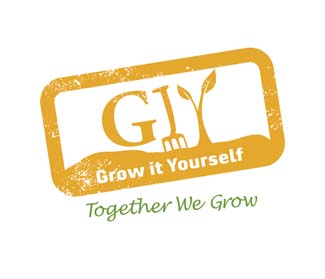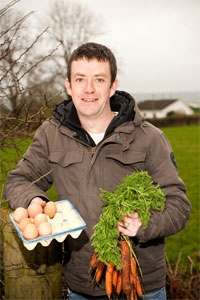Grow it Yourself - July
.jpg) There are some vegetables that you grow yourself and you really wonder whether it's worth the hassle, particularly if there are good commercial alternatives available. But given the fact that most of the tomatoes in our supermarkets are the super-bland, all-year-round Dutch variety and taste of ....well nothing at all, having a good crop of your own tomatoes is really one of the most rewarding things you can do.
There are some vegetables that you grow yourself and you really wonder whether it's worth the hassle, particularly if there are good commercial alternatives available. But given the fact that most of the tomatoes in our supermarkets are the super-bland, all-year-round Dutch variety and taste of ....well nothing at all, having a good crop of your own tomatoes is really one of the most rewarding things you can do.
Tomatoes that you grow yourself taste a million times nicer than anything you will buy in the supermarket - period. This is because the overwhelming majority of commercial tomatoes are grown for superficial uniformity and shelf-life, rather than flavour. You are more likely to eat your own tomatoes as you would an apple rather than slice 'em up and put them in a sandwich. They are a sweet, sumptuous treat, best eaten warm and freshly picked.
I like being in touch with the seasonality of tomatoes though it is a bitter-sweet affair given how short the season is – tomatoes are basically in season for just a third of the year - four short months. Ours are starting to ripen now and they will go on producing hopefully in to late October and then they will be no more and we will shed a tear.
 We try to extend their season a little by getting the first seeds going on a warming mat in early spring at one end and by preserving the produce at the other end (storing, bottling, freezing etc). If you want to really embrace seasonal food consumption, you could do worse then starting with the tomato. Grow as many plants as your space will allow - nurture them, harvest, eat and store.
We try to extend their season a little by getting the first seeds going on a warming mat in early spring at one end and by preserving the produce at the other end (storing, bottling, freezing etc). If you want to really embrace seasonal food consumption, you could do worse then starting with the tomato. Grow as many plants as your space will allow - nurture them, harvest, eat and store.
Enjoy them fresh from July until October and then in the winter enjoy your own ‘processed’ tomatoes too in what ever form you have converted them in to – then give yourself a break from them. They are not in season, so don't be tempted to buy them. When you have sampled the delectable taste of your own tomatoes, I promise you that you won't find this hard.
Date for the Diary
On Sunday 2nd September 2012, Fingal Gardener's Group and GIY Naul are holding an event: 'TOTALLY TERRIFIC TOMATOES' - celebrating all things tomato! It takes place at Seamus Ennis Centre, Naul, Co. Dublin from 12 noon until 5pm. For more information check out www.nickykylegardening.com.
 Things to do this Month
Things to do this Month
To-Do
Any ground that has finished cropping must be quickly cleared away to take more vegetables. Use your produce - eat it, freeze it, process it, exchange it, give it away. Continue to water and feed plants and practice good weed control. Earth up brassicas such as Brussels sprouts - these plants will grow tall and require a good deal of support. Net plants to keep butterflies and the cabbage moth away.
Cut down legume plants that have finished cropping - leave the roots in the soil as they fix nitrogen in the soil. Give pumpkins plenty of water and apply a high-potash liquid feed.
Sow
Continue successional sowings and use quick maturing varieties for autumn use - Swiss chard, lettuce, rocket, salad onions, radish, turnips, peas, French Beans (dwarf), carrots. Sow for winter use - spring cabbage, Hungry Gap kale, parsley, perpetual spinach, chicory and coriander. Plant strawberries now for a good crop next June. Propagate rosemary, sage and mint from cuttings now.
Harvest
July and August are peak months for produce – enjoy it! First crops of French and runner beans, tomatoes, peppers, cucumbers, courgette and aubergine, marrows, beetroot, globe artichokes. Continue to harvest new potatoes, calabrese, cauliflower, cabbage, spinach, carrots, turnips, shallots, garlic, radish, spring onions, salad crops, strawberries, raspberries, tayberries, currents (black, red and white), gooseberries, loganberries, peas, broad beans. Ask yourself – do you really need to go to the supermarket?!
Recipe of the Month – Green Tomato Chutney
Far from being a waste, the tomatoes that don’t ripen can be one of the most important assets you will get from your veg patch this year. The beauty of this recipe is its exclusivity. Because you can’t buy the primary ingredient (green tomatoes) in the shops, it can really only be made by a GIYer.
Ingredients:
• 3kg green tomatoes
• 6 large onions (about 1kg)
• 3 or 4 large green peppers
• 700g brown sugar
• 1.2 litres of vinegar
• Spices: 3 tbs mustard seed, 1 tbs coriander seed, ½ teaspoon celery seed, 1 teaspoon turmeric
Chop the onions and slice the tomatoes finely. Layer them in a very large bowl – i.e. start with onions, then tomatoes, then onions etc, seasoning each layer with plenty of salt and a little pepper as you go. Leave it to stand for a day or so – then drain off the liquid and transfer the veg to a large stock pot.
Add the rest of the ingredients (sugar, vinegar, spices), bring the whole thing to a boil and let it simmer on a low heat for two or three hours. Put it back in to the bowl and let it sit for another day. Put it back in the stock pot and cook it for another half hour so that the liquid reduces down further – you want just enough liquid to cover the vegetables when they are transferred in to pots.
Sterilise some jam jars and ladle the chutney in to them. Don’t be tempted to eat any for about a month – it’s like a fine wine, it will get better with age.
Tip of the Month – Make use of your grass cuttings
Here’s how to make great compost using two great waste-creators in the home and garden - newspapers and grass cuttings. Build an open heap of alternating 10-inch layers of crumpled newspaper and grass cuttings. Allow to get quite tall - 4-6ft - and then leave to rot down for a year.
Operation GIY Nation
Interested in growing your own food? It’s not too late to grow some veg this year! Check out www.giyireland.com/giynation for simple growing projects for July and August that you can try with your kids. Operation GIY Nation is proudly supported by AIB.
------------------------------------
We are trying to get 100,000 people to take a pledge to grow something they can eat – take the GIY pledge at www.facebook.com/giyireland.
 Michael Kelly is a freelance journalist, author and founder of GIY Ireland.
Michael Kelly is a freelance journalist, author and founder of GIY Ireland.
GIY’s vision is for a healthier, more connected and more sustainable world where people grow their own food. We bring people together in community groups and online to inspire and empower them to grow vegetables. There are over 100 GIY community groups and approximately 12,000 people involved in the movement around Ireland. GIY is a registered charity – CHY 18920.
For more tips, information and support visit www.giyireland.com.
© GIY Ireland 2012 – all rights reserved.






There are currently no comments
Leave a comment
Not a member? Register for your free membership now!
Or leave a comment by logging in with: